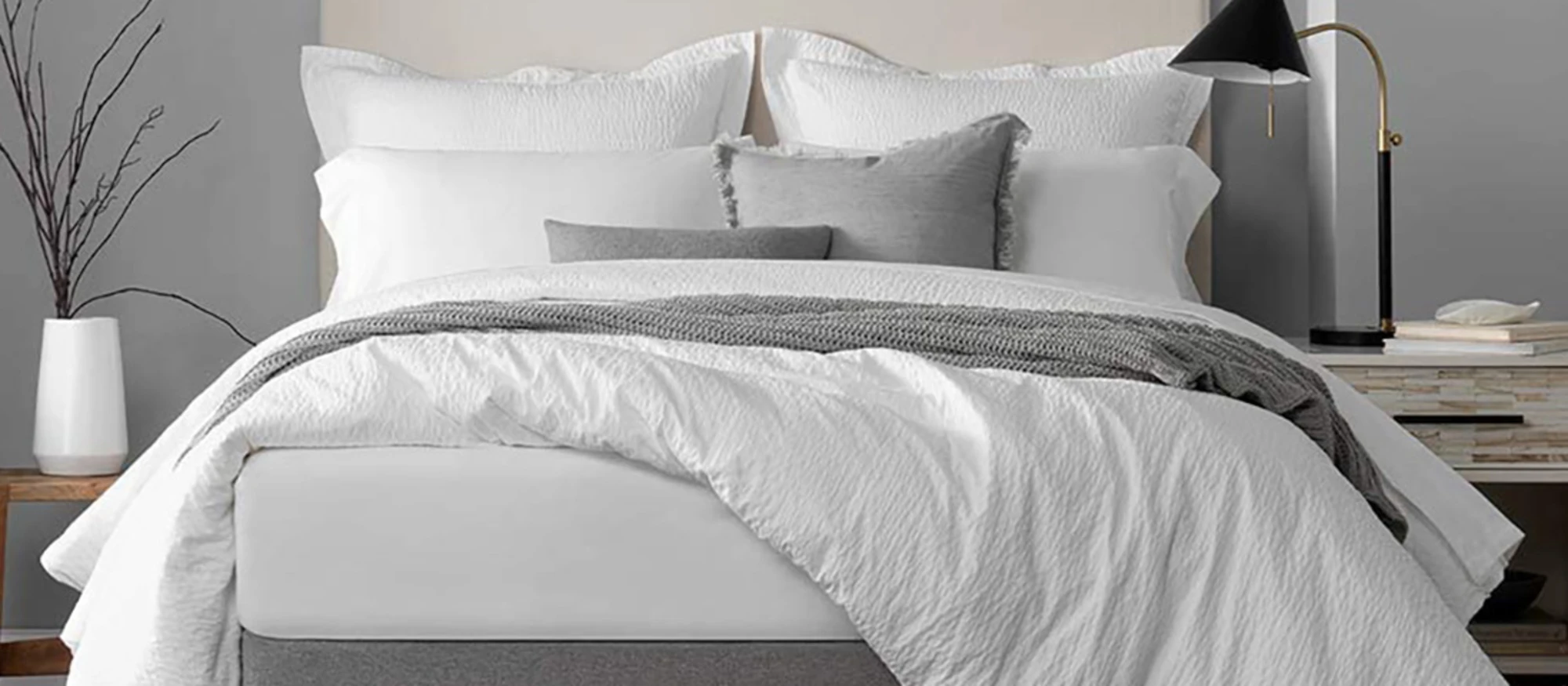Types of Bedding: The Ultimate Bedding Guide for Beginners
Curating the perfect sleep experience is a complicated, multi-faceted process. Every element contributes in its own crucial way to the quality of your sleep. So while it’s essential to start with a sturdy and reliable bed frame and a comfortable, supportive mattress, selecting the right pillows and bedding for your unique needs is just as important.
Luckily for you, we’re experts on all things bed-related, and bedding is no exception. Keep reading for a breakdown of everything you need to know to make the best possible bedding purchase for yourself or your guests.
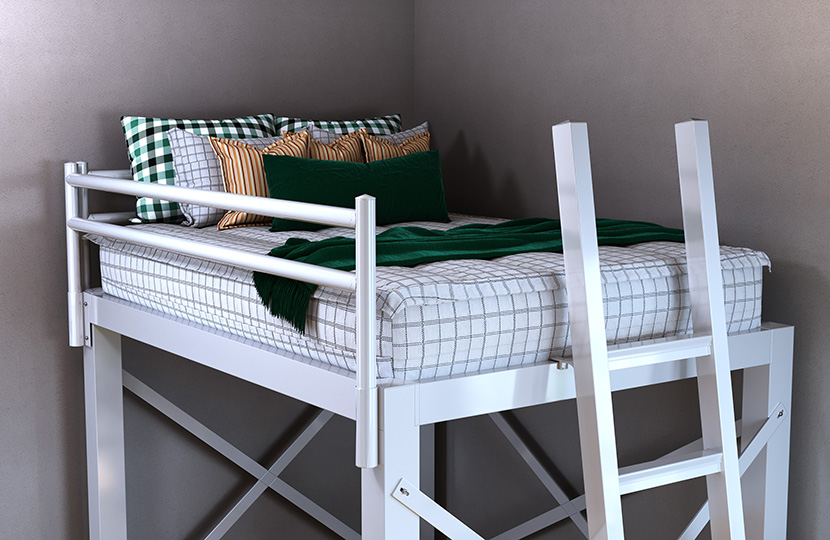
What is Bedding?
May as well start with the basics, right? If you’re unfamiliar or just looking for a working definition, bedding is considered to be anything laid above a mattress or bed frame that is utilized for warmth, hygiene, mattress protection, or decoration. Bedding typically consists of pillows (which we won’t be discussing below), sheets (both fitted “bottom” sheets and loose “top” sheets), pillowcases and shams, and some kind of bed topper or cover. Other bedding accessories like bed skirts or mattress pads can also be incorporated, but aren’t as common or considered as essential as the aforementioned bedding products.
Types of Material
Sheets and pillowcases can be made from a wide variety of different materials that all have their own unique qualities and attributes. Some of these materials are far more common than others, but most are widely available and easy-to-find.
Cotton
Cotton is an all-natural, soft, and highly breathable fiber that is easy to acquire, which is why it’s the most common material used to make commercial bedding products. Cotton is also very easy to wash and care for, but not always as durable as some other fibers.
Polyester
Another material frequently used in bedding products is polyester, a synthetic fabric designed to imitate the lush softness and light weight of cotton. Polyester is often combined with other fabrics (including natural cotton) to create a blended material. It is usually a less expensive option that is more durable than natural cotton, though it doesn’t offer the same breathability.
Microfiber
Microfiber bedding can be made from a wide range of materials – including polyester, nylon polymers, or wood pulp. The fibers are finely and expertly woven to provide extra strength and a lightweight, breathable bedding product. However, because of how microfiber bedding is made, it is highly absorbent and static, making it difficult to care for and clean.
Bamboo
As you start to look at more luxury bedding options, you’ll inevitably come across “bamboo,” which is actually a blended fabric made from natural bamboo pulp processed with chemicals to create a bedding product this is incredibly comfortable, durable, and hypoallergenic.
Silk
The height of luxury bedding has always been silk sheets, which are highly breathable, amazingly lightweight, hypoallergenic, and frankly, very beautiful. Silk is one of the strongest natural fibers, so silk bedding is not only unbelievably cool and comfortable, but also strong and durable. It also doesn’t wrinkle as much as other materials. However, silk is also very expensive and stains easily, so it’s not necessarily ideal for kids or vacation rentals.
Linen
Linen is another natural fiber that is both lightweight and breathable, but far more coarse, stiff, and absorbent than cotton. While it is very cool and durable and has a unique, rustic appearance that fits in well with farmhouse décor, the trade-off is what many consider to be bedding that is less comfortable than natural cotton or synthetic options. It also wrinkles easily and tends to be on the higher end of the cost spectrum.
Lyocell
Lyocell is a more environmentally friendly synthetic fabric (due to a manufacturing process that requires less hazardous chemicals than other synthetic and natural fibers) that also mimics the qualities of natural cotton, while also being far stronger, more durable, and age resistant. It is, however very absorbent, hard to clean, and susceptible to mildew.
All About Weave
Needless to say, there is a lot to know about the different types of fabrics and material used to make bedding, but that’s not the only part of the manufacturing process that can affect the quality of your sheets and pillowcases. The style of weave (i.e., the way yarns are interlaced) determines the strength and shape of the fabric used to make your new bedding. You may be unfamiliar with the different types of weave, so here’s a little primer on the most common you’ll come across.
Percale
Percale is a very tight type of weave that produces very soft material with a slight matte appearance. The perfectly crossed over-under pattern makes percale materials very strong and durable, although it can also make it easier to wrinkle.
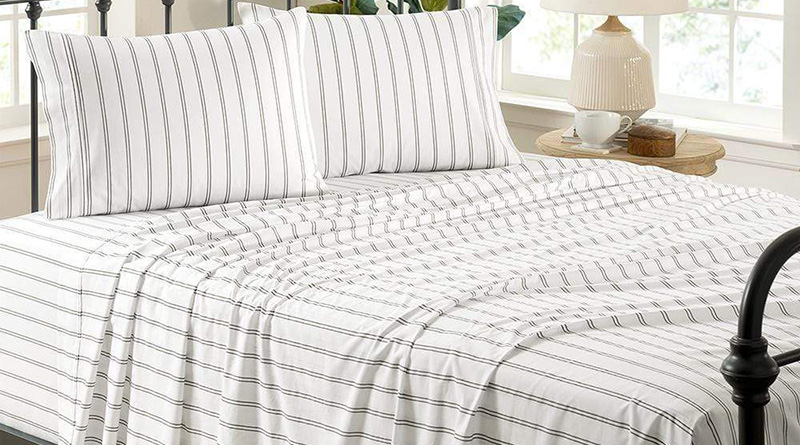
Sateen
The weave of sateen fabrics is a lot looser than percale materials. This makes the sheets feel smoother, look shinier, and resist wrinkles, giving them an overall more high-end or luxury appearance and feel. However, sateen fabrics do tend to be less durable and more prone to pilling over time.
Flannel
Heavy, soft, and warm, flannel weaves are reserved for heavy materials like wool, but are increasingly used with natural cotton or synthetic blends. Ideal for cool climates or moist, humid locales, flannel sheets offer more durability that most other weaves.
Jersey
Jersey weaves create bedding products that feel like soft, comfortable t-shirts. They are usually affordable and very stretchy, making them ideal for younger people. However, they are not very durable and will run quickly and easily once a piece of yarn is broken.
Twill
Twill weaves utilize a diagonal pattern (unlike most of the other options listed above) meant to hold together bulkier, more durable materials. It also makes the fabric more water and air resistant, which can affect breathability.
Understanding Thread Count
The one thing most people seem to be familiar with when it comes to buying bedding is thread count, even if not everyone understands exactly what it means. For instance, one of the most common misconceptions about the idea of thread count is that the higher the count, the higher the quality of the sheets, but that’s an incomplete part of a bigger picture.
The definition of “thread count” relates to the number of threads that can be found in each square inch of fabric (so a fabric with a thread count of 300 would have 150 threads woven horizontally and 150 vertically for every square inch of material). While thread count can and does influence the quality of the final product, its importance has been exaggerated and become outsized in the marketing of bedding products.
In truth, the most important factors that determine the quality, softness, and value of bedding are the type of material used to make it and the way that material was woven together. In some cases, a higher thread count can actually make a fabric too delicate and less durable over time.
Where thread count does matter is when you’re comparing different bedding options against each other and incorporating weave and material into your decision.
What Thread Count Should You Buy?
Everyone is different and there is no one-size-fits-all answer to which thread count is best, but as a rule of thumb, anything with a thread count over 500-600 is probably of questionable quality and should usually be avoided. For a quick cheat sheet, please see below for recommended thread counts for sheets made of different materials or using different weave methods.
Suggested Thread Count by Material
• Egyptian Cotton: 300-400 count
• Supima Cotton: 200-400 count
• Bamboo: 300 or higher count
• Linen: 100-200 count
Suggested Thread Count by Weave
• Percale: 250-300 count
• Sateen: 300-600 count
Size is Everything
While sizing is relatively standardized and consistent across the bed and bedding industry, there are slight variations that can have a small-to-significant impact on how well your bedding fits on your mattress and bed frame. The most important information to keep in consideration when buying bedding is the thickness of your mattress (i.e., how many inches high it is from bottom-to-top).
Luckily, most bedding manufacturers are aware of this issue and create sheets with a variety of “pocket depths” to choose from. The pocket depth tells you what the thickest possible mattress size is that the bottom fitted sheet will fit on (e.g., a fitted sheet with a pocket depth of 14 inches won’t work on a mattress thicker than 14 inches). So when shopping for the perfect bedding, make sure you’re not only getting bedding that matches the size of your mattress and pillows, but also a set where the fitted sheet is appropriately sized for the thickness of your mattress (in other words, make sure to buy your mattress first).
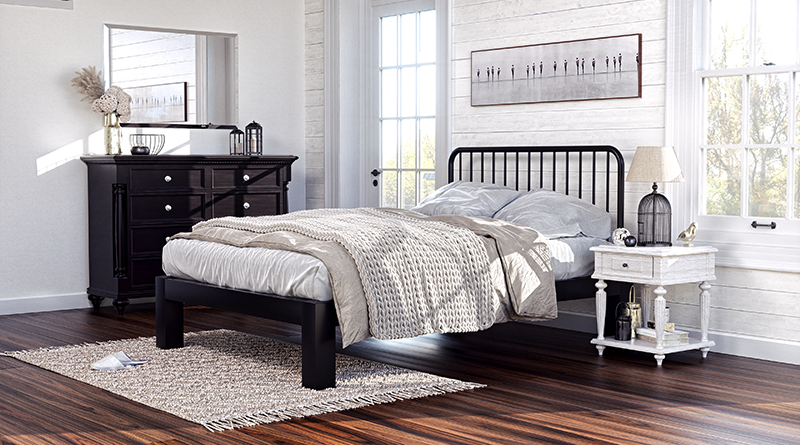
Cover It Up
No bedding set is complete without a bed topper or cover. Whether you prefer a blanket, comforter, quilt, or duvet set, you need to have something to keep you warm and cozy to get a proper night’s sleep.
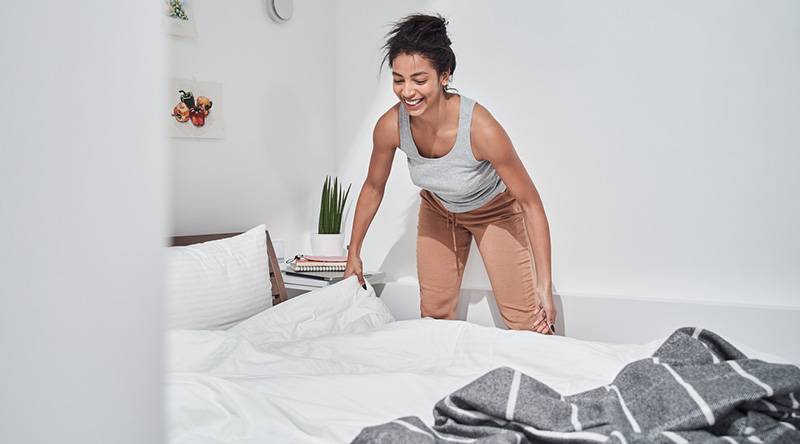
Blanket
Simple lightweight blankets are a great addition to any bed. The primary benefit of a blanket is its versatility. It can be used as a second layer of comfort and warmth on cold nights, alone as the sole cover in hotter climates, or even just used to add depth and a layer of additional decoration.
Comforter
Probably the most common type of bed topper is a comforter – a thick cover made from cotton (or blends or synthetics) and filled with down or a synthetic substitute. Comforters are either sewn-through or feature very simple quilting techniques to keep the filling in place. You can find comforters in a huge variety of sizes, colors, or patterns to find the one that best matches your design. In fact, many bedding sets either come with a comforter or have a matching comforter that you can easily purchase separately to complete your ensemble. Because of the wide selection of options available, it’s pretty easy to find a comforter that will work for you.
Quilt
If you’re looking for a bed topper that is a bit more of a statement and serves both practical and decorative functions, a quilt might be the perfect solution. Quilts are a type of bed cover where the top layer is crafted by stitching together many different pieces of fabric and filled with an inner layer of down or wool between that as a solid bottom layer. They are often as much a piece of art as they are a part of your bedding set and can be used as a lightweight topper in warm climates or combined with blankets in the winter. They fit especially well with rustic, coastal, or casual décor.
Duvet
If you’re unfamiliar with duvets, they are a bed topper that comes in two pieces (sometimes sold separately). The primary piece – known as the duvet insert – is essentially a comforter made from cotton (and/or synthetics) and filled with down (and/or synthetics). These are usually just white. The other part is the duvet cover, which is a fabric cover that goes over the duvet insert. Duvet covers can be quickly and efficiently removed and replaced, making washing them a breeze compared to comforters or quilts.
Because of the cover, duvets also eliminate the need for a top sheet. Duvet covers can vary wildly in size, color, and design and often are manufactured to match specific bedding sets. This is a great bed topper option for luxury spaces, design-conscious bedrooms, or people who don’t care for a top sheet.
The Point of Pillow Shams
Pillowcases we understand. They serve a very specific and important function in your bedding setup. Pillow shams are less common, but they are essentially just decorative pillowcases meant to accent or enhance your design by adding depth or additional decorative elements to your bed’s overall look.
However, the biggest difference between pillowcases and shams is that while pillowcases are open on one side and slip on over your pillow, pillow shams usually have an overlapping slit on the back that more securely wraps around your pillow and hides it completely.
Shams are made to fit on any standard or king-sized pillows (just make sure you’re buying the right size). They are often included in a full bedding set or made to match specific sets but sold separately.
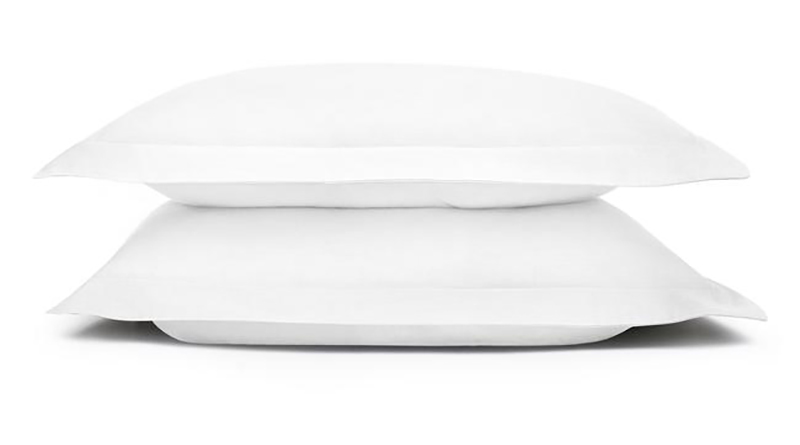
Keep It All Together with Zipper Bedding
Move into the modern world and embrace comfort and convenience with zipper bedding. What is zipper bedding? It’s an all-in-one bedding option that fits on a mattress like a standard fitted sheet, but the top layer of the bedding has a wraparound zipper that can be unzipped to reveal a bottom layer (your “sheet”) and a top layer that serves as a fully functional comforter. It’s somewhere between a standard bedding set and a (very high quality) sleeping bag that provides you with a snug and cozy sleep experience.
The primary benefits of zipper bedding are how easy it is to remove and clean (either the whole thing or just the top layer) and how simple it is to zip up and make your bed for the day. However, you also can’t discredit the aesthetics of zipper bedding, which come in a huge selection of styles, colors, fabric types, and sizes to help you find exactly what you need for your bed frame and mattress. Most zipper bedding also comes with matching pillowcases, shams, or other accessories.
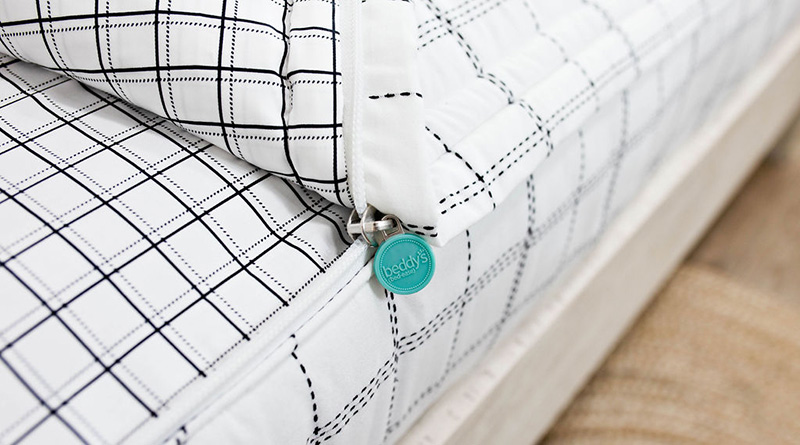
Messing with Mattress Pads
The value of including a mattress pad in your bedding set varies wildly from person-to-person, but they do offer many benefits. First and foremost, they add an extra layer of cushioning between your sheet and mattress to increase comfort. Mattress pads also help regulate the temperature in extreme climates to improve your sleep experience. And if you want to increase the longevity of your expensive mattress, a mattress pad made from fabrics that naturally inhibit mold growth and dust mites will help do just that. For people with young kids, mattress pads can also keep mattresses safe from being soiled during accidents.
Dressing the Bed Frame
Some bedding pieces are purely functional, some only decorative, but most are a bit of both. When it comes to dressing your bed frame with a bed skirt or bed wrap, it’s mostly for style, although both options can help protect your bed frame from excessive wear and tear (and more).
Bed Skirts
Bed skirts will help cover and hide the framework of the bed, as well as any items or containers you may be storing underneath the bed frame to maximize the efficiency of your room. As stated, they also protect your bed frame from the natural wear-and-tear of life and can eliminate draft underneath the bed that can cool down your mattress. They also serve the valuable aesthetic purpose of tying your bedding together, especially if it doesn’t necessarily match the design of your bed frame. There are many different sizes, styles, and colors of bed skirt available, including split corner, pleated, and ruffled bed skirts.
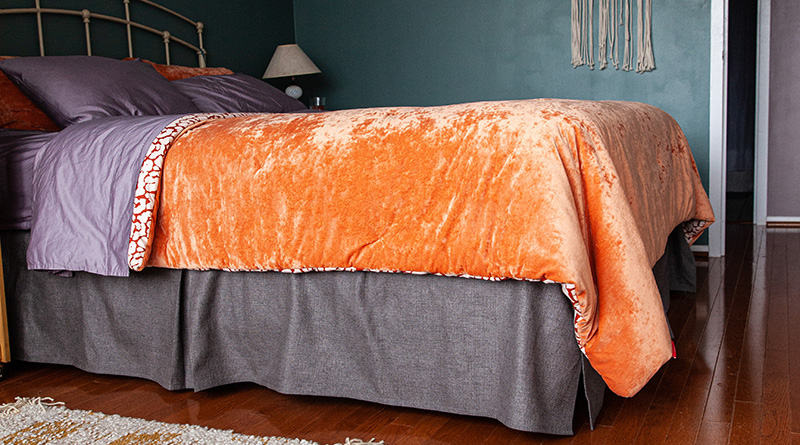
Bed Wraps
Bed wraps serve the same purpose as bed skirts, but with a more design-conscious approach. Instead of fitting loosely around the bed, something like our Circa Bed Wrap from BigBeds.com adheres snugly to the frame, eliminating movement and giving the bed a clean, attractive appearance that almost looks as if it has an upholstered finish.
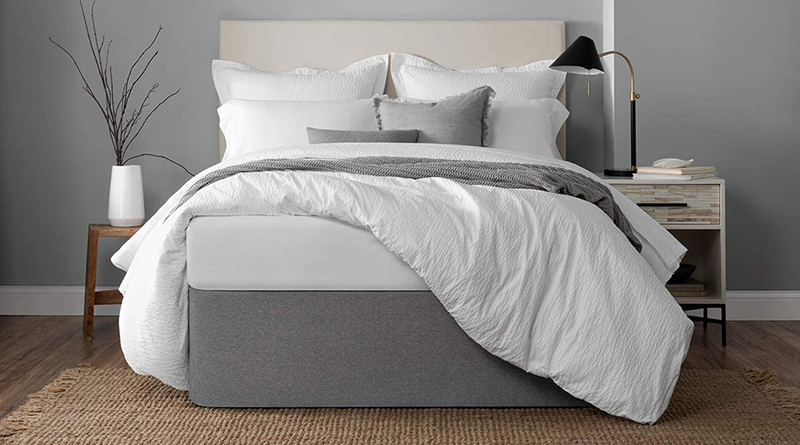
Read Up on Returns
No matter how much you research or how carefully you choose your next bedding purchase, sometimes things just don’t work out, which is why the last (but certainly not least) bit of bedding buying advice we can give you is to always be aware of the store or website’s return policy. Make sure that you aren’t permanently sinking your money into bedding that won’t improve your sleep experience.
